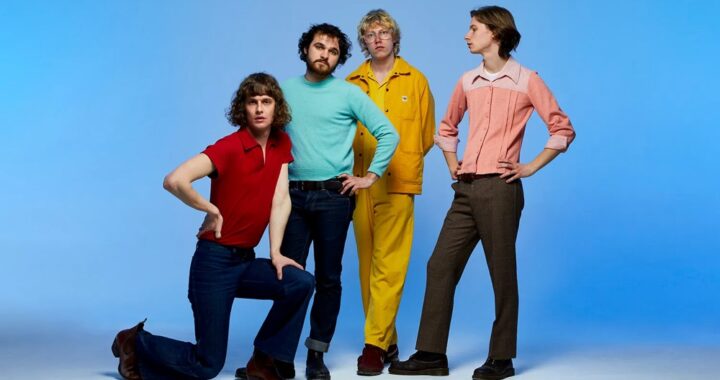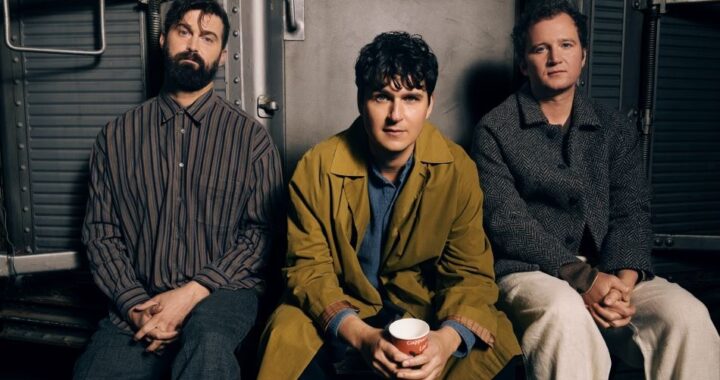Album Review: Mayer Hawthorne – Where Does This Door Go
3 min read
The man known as Mayer Hawthorne is treading a very fine line. Like so many artists influenced by bygone eras, they always stand the chance of running the risk of sounding a cheap imitation of their metaphorical forefathers. As we all know, it’s not a good look, and at times, positively cringe-worthy. In this instance however, we have a blip in the aforementioned trend, in the shape of the anomaly that is one Mayer Hawthorne.
 Now on album number three – Where Does This Door Go – Hawthorne appears to have perfected his brand of modern soul to the point where it can be considered a tried and tested formula. Not that that equals to ‘formulaic’ by any means, instead, it means reaching a consistent quality within the music he is creating and, more importantly, the sound he is striving to achieve. Produced by Jack Splash, Oak & Pop, and the man with his fingers in many pies, one Pharrell Williams, Where Does This Door Go breaks us in with the intro Problematization before easing into the chilled out, Mowton-esque sound of Back Seat Lover, where Hawthorne croons ‘Oh girl, I just can’t ignore what we could be, but if that’s all it is, that’s alright with me’. The Innocent is also a top notch pop song that is slightly reminiscent of something Bruno Mars would concoct (can I hear a touch of Locked Up In Heaven in the background?) and both would make brilliant singles.
Now on album number three – Where Does This Door Go – Hawthorne appears to have perfected his brand of modern soul to the point where it can be considered a tried and tested formula. Not that that equals to ‘formulaic’ by any means, instead, it means reaching a consistent quality within the music he is creating and, more importantly, the sound he is striving to achieve. Produced by Jack Splash, Oak & Pop, and the man with his fingers in many pies, one Pharrell Williams, Where Does This Door Go breaks us in with the intro Problematization before easing into the chilled out, Mowton-esque sound of Back Seat Lover, where Hawthorne croons ‘Oh girl, I just can’t ignore what we could be, but if that’s all it is, that’s alright with me’. The Innocent is also a top notch pop song that is slightly reminiscent of something Bruno Mars would concoct (can I hear a touch of Locked Up In Heaven in the background?) and both would make brilliant singles.
Piano led The Only One manages to sound reminiscent of a Songs About Jane era Maroon 5, whilst Wine Glass Woman turns the entire album on its head with its irresistibly funky, lounge vibe, with Hawthorn smoothly singing the refrain ‘I know what you’re drinking, love, tell me what you’re thinking of’. Lead single Her Favourite Song proves why it was chosen as such; riddled with a funk bass guitar riff that runs through the track, the song turns sultry with both Hawthorne and guest vocalist – the brilliant Jessie Ware, nontheless! – seductively winding their voices around the chorus. It is a perfect collaboration, a stellar song, and whilst it is a shame that Ware’s voice is not utilised more within the song, it surprisingly runs the risk of ruining what is a perfect gem of a track by doing so. Midway through the album we run into Crime. Featuring current fave, Kendrick Lamar, the track is a slow burning effort that brings to mind the less brash efforts of American rapper, Drake, and whilst the rap switches up the sound of the track somewhat, it is a non-essential contribution.
The songs on Where Does This Door Go, like on many an album, appear to deal with Hawthorne’s experiences with love, loss and longing. The title track is of no exception, with the soothingly dreamy atmosphere of the track being slightly akin to Frank Ocean, and Robot Loves sees Hawthorne recount the feeling of being used by the physical aspect of love, and is exceedingly catchy. The groovy ‘retro/modern’ balance on offer here gives a new spin on the familiar which, of course, can either end up as despicably bad or incredibly good. Fortunately, this falls in the latter category, the neo-soul resulting in an almost welcome, homely feeling without the listener feeling cheated with old fodder. A wild card example of this is The Stars Are Ours, where even Fleetwood Mac is channelled to full aplomb. It is a mixed bag of songs, but only in the sense that Mayer Hawthorne’s influences are splashed all over this record – soul, funk, a smidge of reggae (Allie Jones) – you name it! – it’s here, but it works, with the sounds being tied together by Hawthorne’s smooth voice and his confidence in his artistic aim. Where Does This Door Go is a brilliant effort.
::: covering reviews and interviews for the latest music releases on RenownedForSound.com



